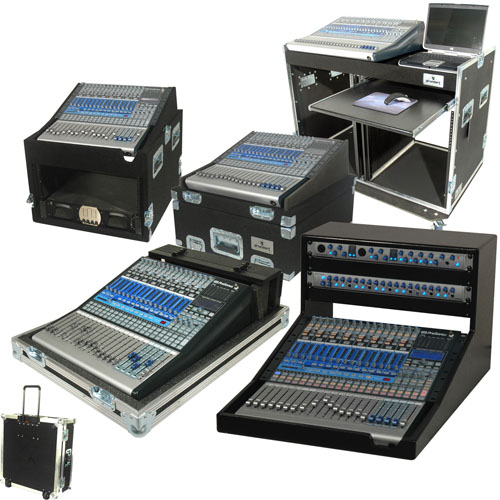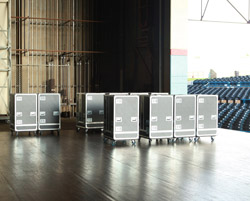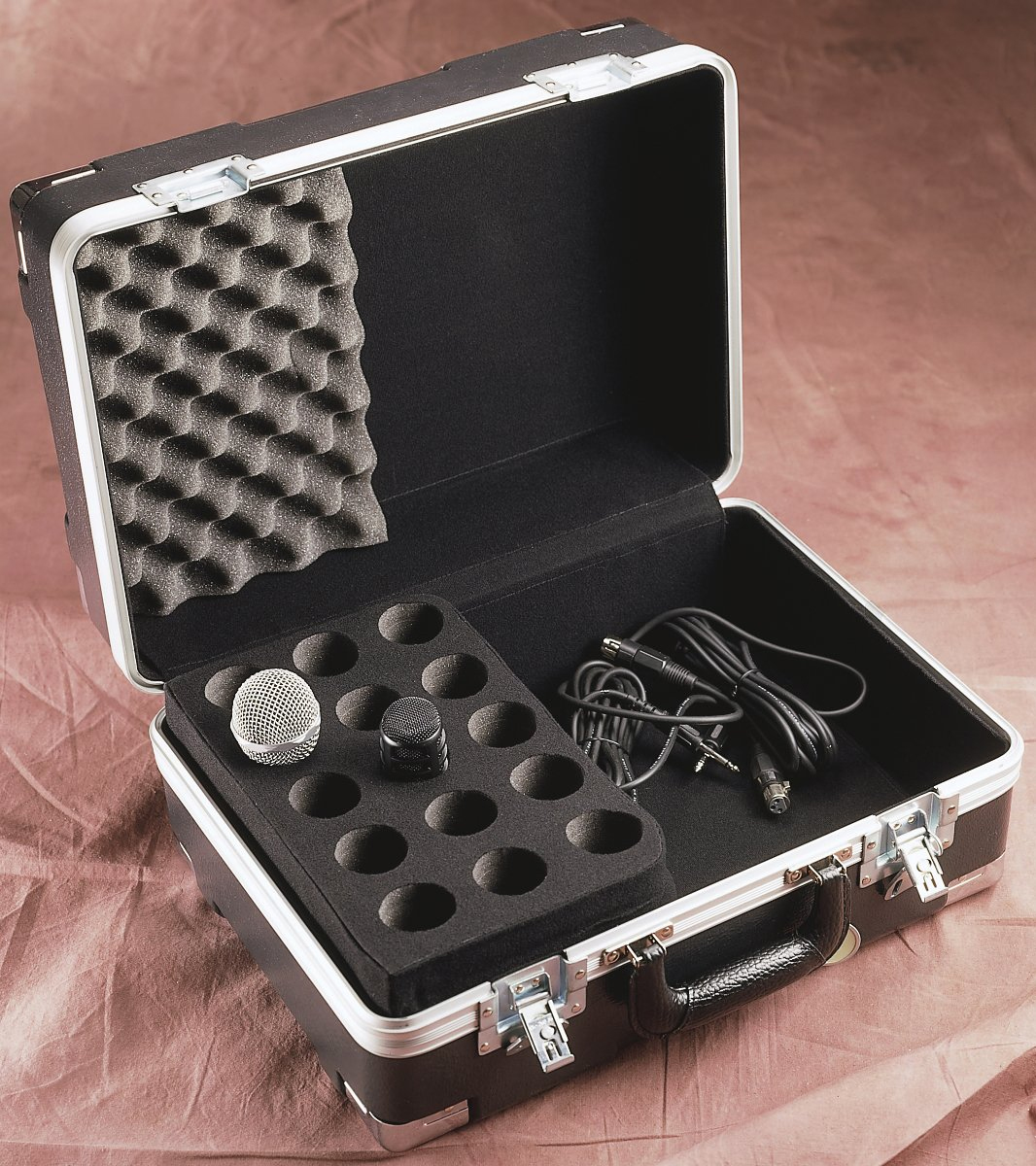If audio gear doesn’t arrive at the venue ready to work, you’re out of luck. It’s the primary reason why racks and cases are so important (if overlooked).
And in addition to the obvious purpose of protecting equipment from damage, they also serve other important functions, including helping to organize, inventory, store, transport and set up a systems.
Being able to locate things quickly on a show is a must, especially when you’re working with local stagehands who are not familiar with your gear. Having system gear well organized in labeled cases, trunks and racks makes things go smoother and faster at load in and load out.
From a logistics standpoint, cases assist the production team by making items that are awkward to move around on their own easier to move, store and transport.
Wheeled cases can be rolled around the shop, at the gig, or easily up a truck ramp and the case handles help in moving as well as stacking cases in trucks.
Road trunks and cases may also be moved by forklift trucks, allowing larger items to be easily relocated.
Racks offer a huge advantage: equipment can be wired up and ready to go.
Three letters often mentioned with cases are ATA, which stands for the Air Transport Association of America, and more specifically, this organization’s Specification 300, which covers reusable transit and storage containers. The specification sets guidelines and testing standards that puts every case into one of three category certifications: a Category I rating means it can survive 100 airline shipments; Category II refers to 10 airline shipments; and Category III refers to a single airline shipment.

Many styles can meet ATA standards, and note that not all “ATA-style” cases are actually certified. It’s best to check with the manufacturer to find out what level of protection a case really offers.
Bags To Ammo
Cases can be made from a wide variety of materials. The most common in our industry are also often called “flight cases” or “ATA cases,” and they are made with laminate-covered plywood panels joined with extruded aluminum edging and heavy ball corners for added protection.
Quarter-inch laminate covered plywood panels are used for smaller and lighter duty cases, while three-eighth-inch and half-inch panels are used for larger heavy duty ones. Other common case materials include injection molded plastic, rotationally (roto) molded plastic, and plywood.
While there are dozens of case manufacturers, many production folks opt to build at least some of their own. Wooden road trunks are popular among the do-it-yourself crowd, and for those wanting to build ATA style cases, companies like TCH, Penn Elcom and Reliable Hardware sell all the parts needed.
Many manufacturers offer cases and trunks sized to fit two-, three-, or four-across in standard trucks and trailers. These “truck pack dimension” cases usually feature “stacking cups” in the lid, allowing a similar sized case to ride securely atop another, with the wheels of the uppermost case secured from movement in the recessed stacking cups of the case below.
Lets take a look at the most common types of cases:
Bags. Soft-sided bags are popular for soft goods like stage skirting or curtains and smaller production gear like tripod loudspeaker stands. While they keep the items clean and may make transporting a pair of stands a little easier, they don’t offer much in the way of protection.
Covers. While technically not cases, covers are popular for larger loudspeakers, especially subwoofers. Many are padded and help keep the units clean as well as protect against dings and scrapes when transporting. Some manufacturers offer covers for particular models of loudspeakers, and there are several aftermarket manufacturers that make covers for a variety of stock speakers, as well as custom models to fit everything else.
Hampers. Large canvas hampers (a.k.a., hamper trucks) are commonly used to store and transport curtains. Plastic models (a.k.a., tubs) are sometimes seen holding cables, and are popular with some regional companies because they can stack in the shop, saving space.
Totes. Plastic totes are often utilized for organizing small parts, and can then be placed inside larger trunks providing an organized storage solution. Totes with the attached lids are also popular with some companies for carrying mic cables and gear.
Ammo Cans. Military ammo cans are the de facto storage containers for truss bolts in show business. These waterproof cans are great for organizing small parts.
















